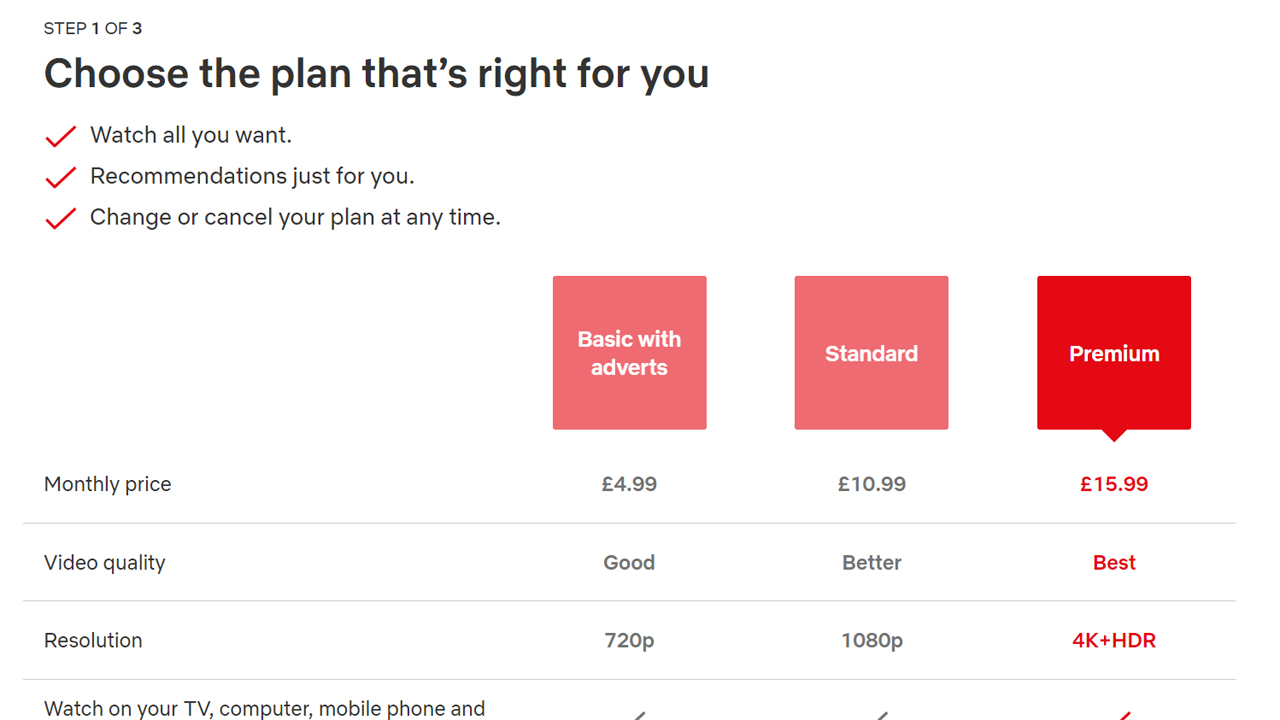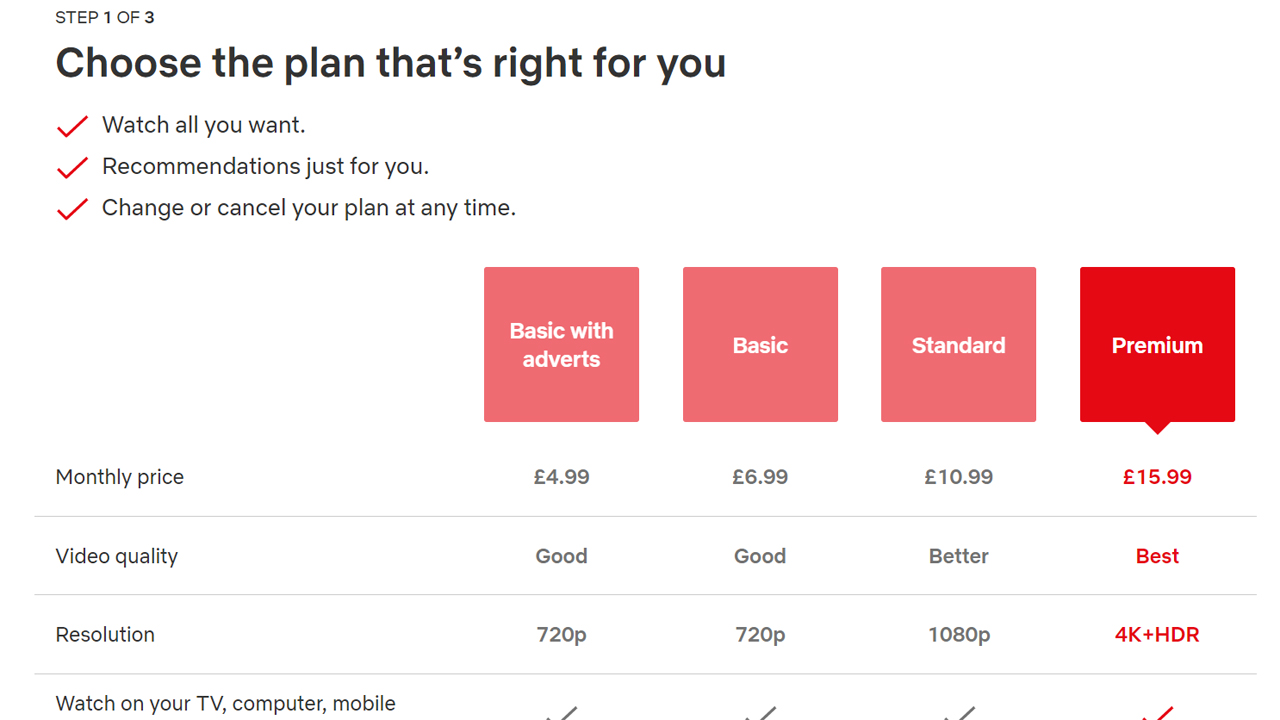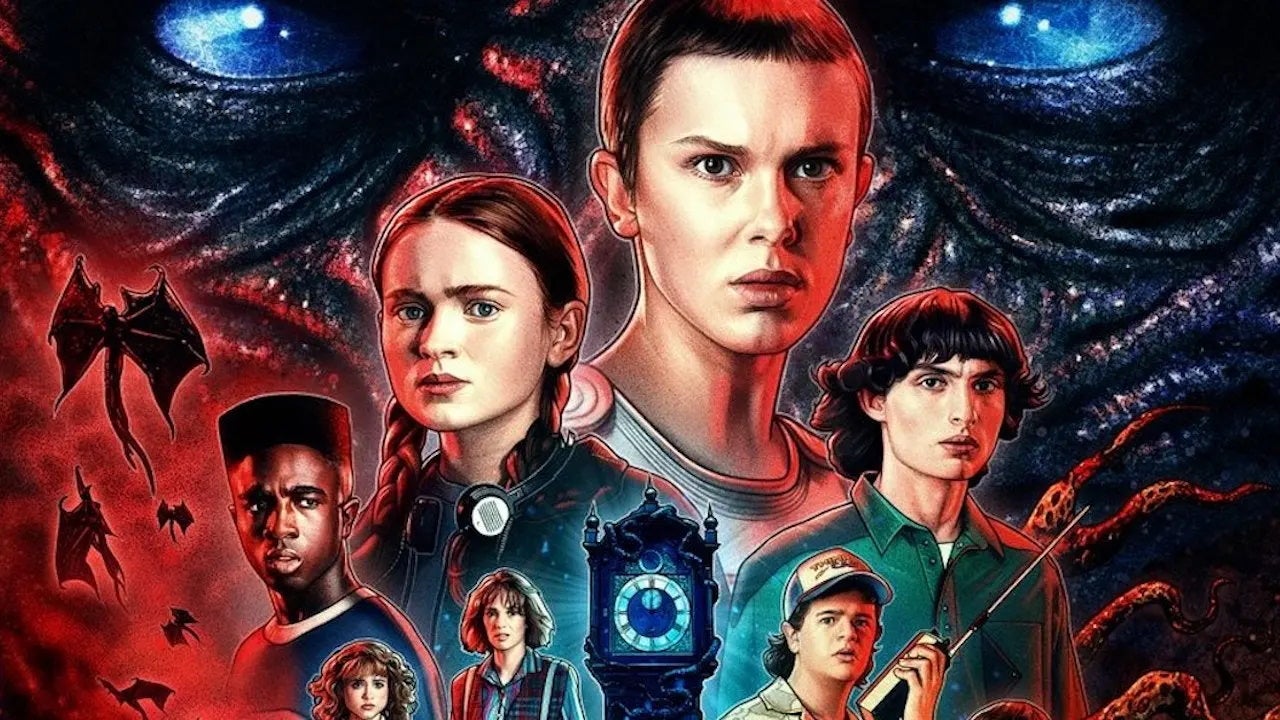Netflix is pushing customers towards signing up to its ads-free basic tier, despite suggesting it never would.
As spotted by streaming industry insider Andrew Freedman (and first reported by Cord Busters), Netflix is trying to encourage potential subscribers to sign up to its ads-supported basic tier, rather than its traditional basic tier.
Previously, customers who navigated to Netflix's sign up page were greeted with four tiers to choose from: basic with adverts, basic, standard, and premium. The latter three are not supported by ads, meaning viewers won't have to sit through five minutes of adverts for every hour of Netflix content they stream.
Now, however, those looking to purchase a subscription are only given three tiers to choose from, with the monthly priced $9.99 / £6.99 / ₹199 INR / AU$10.99 basic tier nowhere to be seen.

Or so it seems. Netflix's basic tier is still available to buy – you just have to do a little bit of digging in order to find it.
Specifically, you'll need to scroll down until you see some small print that reads 'Want more options? See all plans'. Click on the linked text and you'll be taken to a near-identical sign-up page, which includes the ads-free basic tier. This tier is slightly more expensive than the ads-supported option, but you won't have to sit through commercials, plus you have the option to download the best Netflix shows, best Netflix movies, and best Netflix documentaries to your device of choice. This tier allows you to watch Netflix content offline, too.

So, what's the big deal? Netflix's basic tiers only offer 720p resolution, so most viewers will opt for the standard or premium tiers, which give you better video quality, a higher resolution, and other bonuses, right?
Not necessarily. The current cost of living crisis means consumers are having to make big decisions about how they spend their money. That includes which streaming subscriptions – whether that's TV and movie platforms, or music streamers like Spotify – they're likely to keep or cancel.
With people having to make their money stretch further – or, in some cases, even struggling to pay their bills – a cheap, albeit ads-supported subscription to the world's best streaming service will surely appeal to some. Netflix, then, might think it's acting in consumers' best interests by putting its cheapest subscription tier front and center. As we mentioned, the company's non-ads basic tier costs more than its ads-free cousin, so why wouldn't Netflix push this one during a time of economic uncertainty?

However, the problem lies in how Netflix is promoting its ads-free basic tier. By actively hiding its non-ads basic tier, Netflix is reducing consumer choice on its own sign-up page. That could be considered as poor customer service, as it deprives potential subscribers from seeing every option available to them.
It's a move that also flies in the face of what Netflix's executive team told its own shareholders. During Netflix's Q3 2022 earnings call, Greg Peters, Netflix's Chief Operating and Chief Product Officer, claimed the streaming giant would take a "pro-consumer approach" (per financial advice expert The Motley Fool) to providing consumers with its subscription options.
"As we stated before, we're not really trying to steer our members to one plan or another," Peters said. "We're trying to take a pro-consumer approach and sort of let them find and land on the right plan for them... And so, we really anticipate that this is going to be a pro-consumer model that will be more attractive, bring more members in because the consumer pricing price is low."
So @HedgeyeComm is obviously one of the sharpest minds out there, and he spotted probably the most "un-customer" friendly thing I've seen them do.Basically, they're hiding their fourth plan on their sign-up page: pic.twitter.com/edqD7ky51cJanuary 13, 2023
Peters made those comments after Netflix posted a net increase of 2.4 million subscribers in Q3 2022, which came after successive financial quarters where the company lost millions of customers and subsequently cancelled multiple, in-development shows. At the time, then, it seemed Netflix was buoyed by its subscriber-based turnaround and wanted to maintain that positivity by telling investors what they wanted to hear.
And yet here we are, four months after that earnings call, with Netflix burying one of its subscription tiers in the small print of its sign-up page. So what changed? The popularity (or rather, unpopularity) of Netflix's ads-based basic tier.
As we reported on January 9, analysis conducted by research firm Antenna suggested uptake on Netflix's ads-supported tier had been slow – incredibly so, in fact, with just 9% of new US subscribers signing up to this particular plan in the four months since launch.
Despite the sluggish start, Netflix President of Worldwide Advertising Jeremi Gorman suggested the company was "pleased with the growth we’re seeing" (per TechCrunch) and that they expected further uptake in the coming months as the ads-supported tier is rolled out in other world regions.
Reading between the lines, it seems Netflix isn't as pleased as it claims. The evidence suggests it's pushing potential subscribers to buy its ads-based basic tier instead of its non-ads one, which directly contradicts the company's previous comments on being consumer friendly. It's not a good look, Netflix, and you know it.
We've reached out to Netflix for an official comment on why it's ads-free basic tier has been hidden on its sign-up page. We'll update this article if we receive a response.
Comments